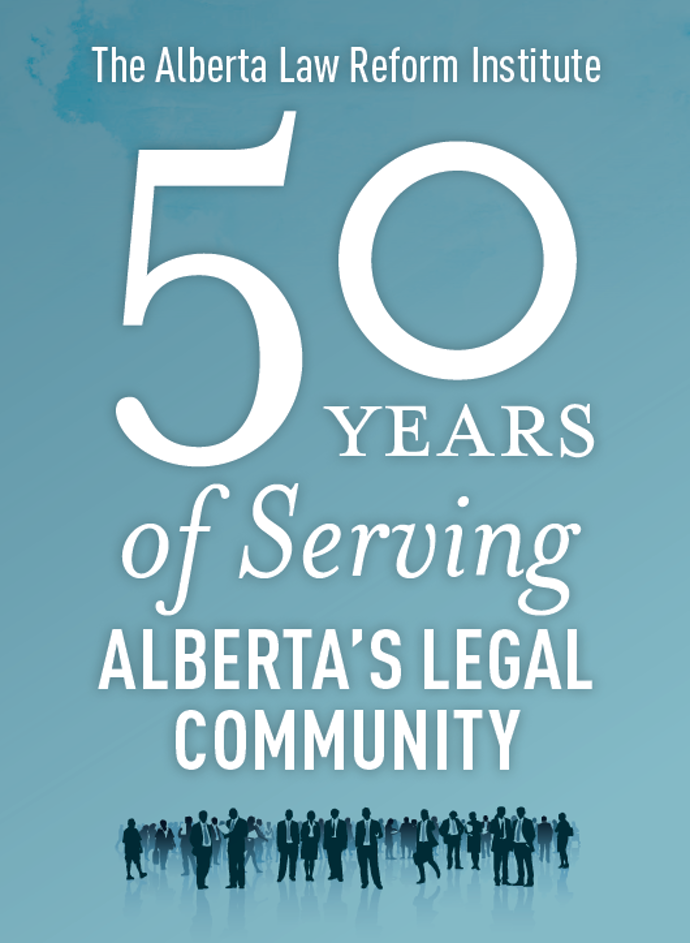
On November 15, 1967 Dr. Max Wyman, Mr. J.E. Bradley, Mr. John E. Hart, Mr. H.G. Field and Mr. W.H. Hurlburt signed an agreement on behalf of the Board of Governors of the University of Alberta, the Attorney General of Alberta and the Law Society of Alberta respectively. Thus was formed the Institute of Law Research and Reform." This tripartite agreement brings a level of formality to the Institute in the form of formal recognition by the Province and Law Society of Alberta alongside the University of Alberta's strong track-record of research.
With the mandate to "advance just and effective laws through independent legal research, consultation and analysis," the team at the ALRI is incredibly successful, with approximately 70% of their suggestions implemented by the government. As Lown, Director of the Institute, explains, that is the "acid test", not simply the idea of advancing just and effective laws for all Albertans, but that these laws are implemented.
The mandate to provide legal reform that positively affects all Albertans is a wide remit, and the long list of projects attests to this kind of challenge. In fact, just a glance at the current agenda highlights the broad spectrum of reform; ranging from the status and rights of children born posthumously by assisted human reproduction to matrimonial property to not-for-profit incorporations. A list of current and recent projects is available at the Institute's website: http://www.alri.ualberta.ca/index.php/projects.
Remaining pertinent to Albertans while keeping up with the changing times is one ingredient in the ALRI's long-standing recipe for success. One such example is also the biggest project the Institute has undertaken so far; a rewrite of the Alberta Rules of Court. The project demanded seven years, fifteen counsel (both full and part-time) and approximately one hundred and twenty volunteers and 2.6 million dollars, but took less than one year to be implemented.
Another example, and so critical not just to Albertans but influential across the common law world involves the Limitations Act. A clear conceptual change streamlines the process and condenses what was technical and confusing law down to two general principles. Now, claimants have two years since discovery of the injury to sue, and defendants have repose ten years after the damaging act occurred. The ALRI helped change a statute that was over 60 sections long to 13 sections; bringing clear, concise and fair legislation to Albertans.
Alongside this drive to remain relevant to Albertans, is another ingredient in this winning recipe: the ALRI's connection with the University of Alberta. Lown says that when the "leading lights" in the legal field saw the need for such a body, they knew a formal agency with deep links to the University's "history of research and analysis" was key. But, mixing the University of Alberta and just legislation doesn't quite give rise (pun intended) to the final concoction. It is the people. It is the Counsel, the Board Members, and the Researchers who make the Institute. "Law reform is an applied science, it is not enough to know the theory, it requires talented people to take on the challenge." Even as the ALRI searches for a new Director, Lown still says, "after 28 years I still love my job, it is great challenge.